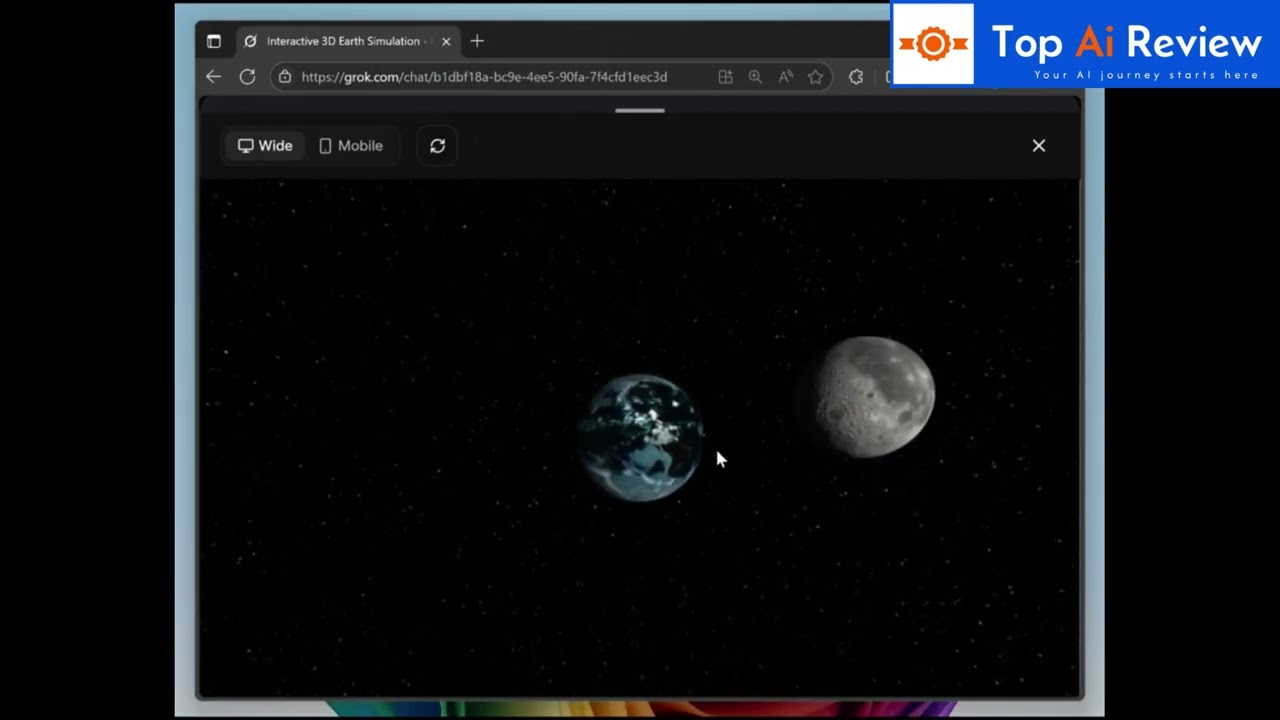Grok 4 Revolutionizes Earth Simulations with Unmatched Realism and Precision for Researchers and Educators

Grok 4 Redefines Digital Earth: Unveiling Unprecedented Realism in Planetary Simulations
The Arrival of a New Standard in Earth Simulations
A transformative leap in digital planetary modeling has taken place as Grok 4 establishes itself as the leader in precision and depth for simulating our world. The latest advancements reveal that this platform not only matches but exceeds the visual fidelity and accuracy of renowned alternatives. This new benchmark has been set through rigorous computational innovation and an expanded infrastructure, enabling finer resolution and a more thorough depiction of terrestrial dynamics. As a result, the approach to visualizing the planet’s surface, atmospheric transitions, and orbital mechanics acquires a new layer of clarity and scientific authenticity.
What distinguishes Grok 4 is its profound capability to render multi-layered environments with exceptional specificity. While previous generational tools presented competent snapshots, Grok 4 calculates and applies textures, manages variable lighting, and tracks both cloud movement and satellite orbits simultaneously. This process is not just a technical achievement but a redefining moment for realistic, interactive explorations of planetary systems, giving both researchers and educators the means to illustrate complex phenomena with granular authenticity.
The Technological Backbone: Reinforcement Learning and Computational Power
The development of this advanced digital ecosystem required a substantial elevation in computational resources and learning algorithms. Grok 4’s foundation rests on a sophisticated reinforcement learning architecture that empowers the system to derive highly accurate solutions and visualizations when confronted with ambiguous or incomplete data. Utilizing an unprecedented number of parallel processing units, the model was trained to refine subtle aspects of terrain, atmosphere, and orbital physics, surpassing previously set accuracy thresholds in benchmark tests.
This new methodology has enabled Grok 4 to simulate changing environmental factors—such as weather, solar influence, and seasonal variations—across the globe. The model’s ability to analyze and interpret real-time data streams further enhances the validity of its outputs. Such dynamic integration is an essential stride for applications that demand up-to-date planetary data, including climate science, urban development planning, and satellite trajectory monitoring.
Comparative Edge: Precision and Realism in Focus
A pivotal aspect of Grok 4’s design is its emphasis on matching digital representations as closely as possible to observable reality. The algorithm’s capacity to independently determine and map out surface textures, atmospheric layers, and light diffusion not only yields compelling visuals but also ensures the outputs are scientifically plausible. During live demonstrations, the model displayed intricately detailed three-dimensional constructs of Earth, its moon, and nearby satellites, calculating shadow movements and orbital inclinations with high fidelity.
What truly sets this technology apart from its contemporaries is the manner in which it approaches the challenge of simulating overlapping physical processes. By accurately portraying the interplay between natural and artificial objects in near-Earth space, it transcends the limitations of previous models. This advancement is not limited to graphical output; it extends into the realms of academic research and practical application, offering a robust toolset to experts in geoscience, aerospace engineering, and environmental monitoring who require data-driven insights rendered in a visually accessible format.
Origins, Evolution, and Future Trajectory
The roots of this innovative system trace back to a concerted push to overcome the common shortcomings in prior digital modeling frameworks, particularly in the visualization of planetary complexities. Early iterations were restricted by computational bottlenecks, preventing high-resolution integration of diverse environmental variables. The breakthrough came through scaling up both data access and processing capacity, resulting in a platform capable of learning and generating nuanced outputs with unprecedented swiftness and accuracy.
Each milestone, from the early conceptual stages to the deployment of massive parallel processing clusters, has contributed to the layered intelligence now exhibited. With continuous improvements in algorithmic design and computational throughput, Grok 4 is poised to extend its impact beyond initial expectations. The roadmap for ongoing enhancements points toward deeper multimodal understanding, opening the door to richer, more comprehensive simulations encompassing not only visual but also auditory and textual environmental cues.
Terminology and Application: Understanding the Core Framework
To grasp the true significance of this digital modeling advancement, familiarity with several key terms is beneficial. Simulation fidelity refers to the degree to which a digital construct mirrors the complexities of the real world. Reinforcement learning is the technique by which the system iteratively improves its understanding and predictions through feedback-driven training cycles. Parallel processing denotes the simultaneous computation across thousands of processors, delivering the speed and scalability essential for real-time rendering and analysis of planetary systems.
These foundational concepts interlock to produce an unparalleled digital engine for modeling planetary environments. As the platform’s accessibility broadens, the fields set to benefit range from atmospheric research and urban planning to interactive education and public outreach, underscoring the transformative potential of high-fidelity Earth simulations on science, policy, and society.
